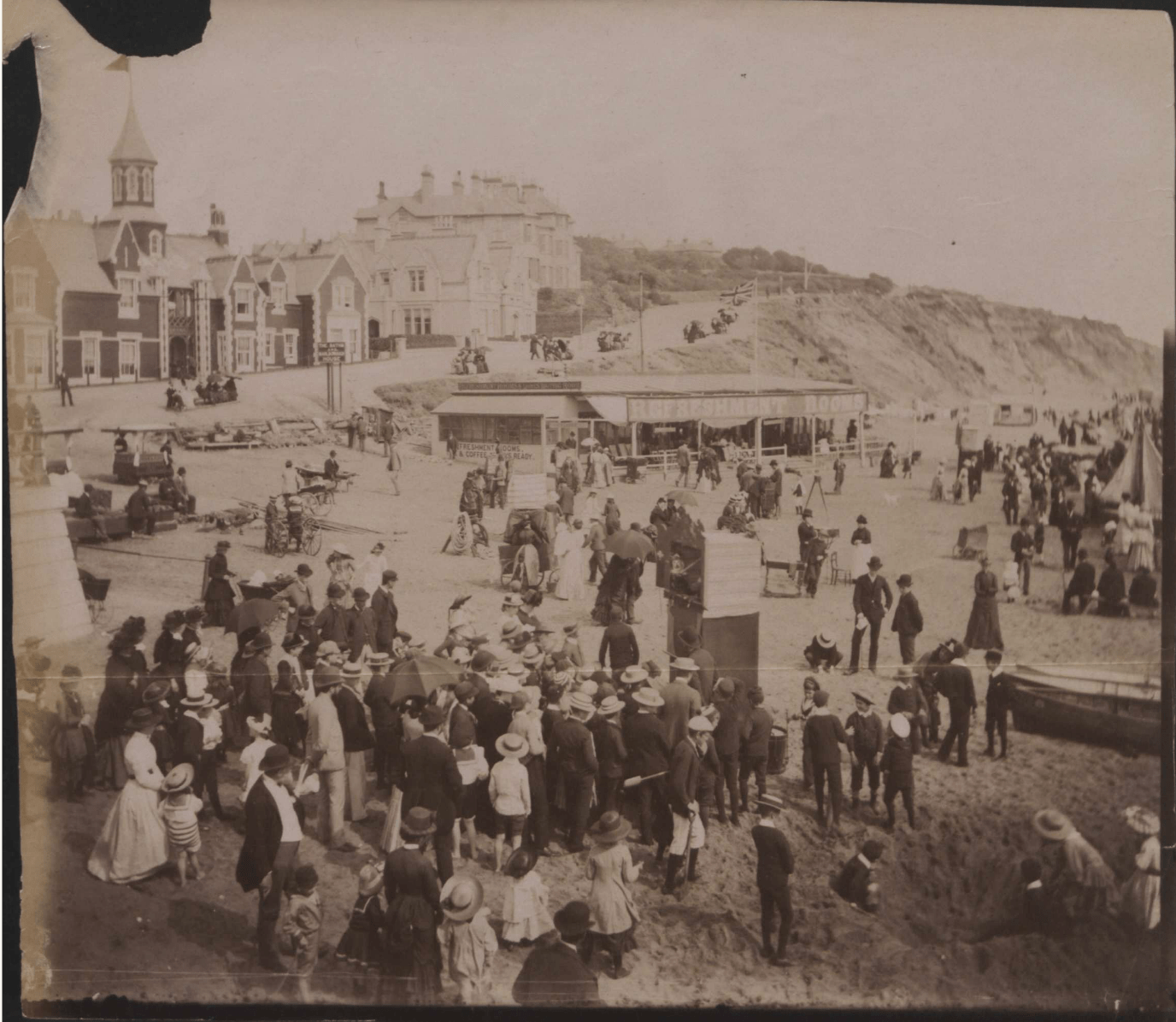Bournemouth offers many attractions—but before you take off to see the Lower Gardens or the Russell-Cotes Art Gallery & Museum, why not familiarise yourself with a bit of the history of this scenic spot?
For years, Bourne Mouth was a nearly unpopulated plot of land crossed only by fishermen and smugglers. Early newspaper mentions were generally of this aspect:

In 1812, Bournemouth was ‘founded’ by Captain Lewis Tregonwell, a retired army officer who fell in love with the area while patrolling the coast line against Napoleon. He planted hundreds of pine trees and effectively brought Bournemouth into public notice as a vacation spot and spa town.

In 1841, a mention in Augustus Granville’s The Spas of England (reviewed in The Medico-Chirugical Review, and Journal of Medical Science) boosted the town’s reputation, and additional guides and promotion followed, including The Visitor’s Guide to Bournemouth, and its Neighbourhood.


By February 1885, London itself had taken note to the point of featuring ‘literary notes’ on Bournemouth in the Graphic. Attributing Bournemouth’s existence to the passage in a book by Sir James Clark, the Queen’s physician, the Graphic touches on Bournemouth’s famous pinewood and recommends for all visitors the late Mr Bankes “History of Corfe Castle” as a ‘classic in topographical literature.’ For those interested in the history – or at least local lore – of these castles, I strongly recommend the rollicking Castles and Their Heroes: by Barabara Hutton, 1868 (Chapter IV: Corfe Castle).
Also in 1885, the Mont Dore Hotel sprung up, a famous health resort whose foundation stone was laid by Oscar II, King of Sweden, and is now the town hall.

Photograph Instantaneous, Beach View, Bournemouth, Punch & Judy near Centre of Picture, with Children in Front, from East Side of Pier. William Wood Perkins. Photographer: William Wood Perkins. Page 276. 1887. Nineteenth Century Collections Online
During World War I, this seaside resort hotel was taken over by the government and became a hospital. The Daily Telegraph reports on 24 November 1915 that ‘visitors staying there are being transferred to other hotels’ to accommodate wounded Indian soldiers.

Indian wounded out for a motor ride, Mont Dore Hospital, Bournemouth from Nineteenth Century Collections Online
Today, attractions include the Victorian – including the Winter Gardens, the ancestor of Captain Tregonwell’s tree-planting—as well as the modern (after all, The Times did declare this ‘Britain’s sexiest resort’ in 1998).
Enjoy the historical and the contemporary sights while you’re in town – and we look forward to seeing you at Stand 45 at UKSG 2016!

[1] Aitkin, Thomas Johnstone. The Visitor’s Guide to Bournemouth, and Its Neighbourhood. 3rd ed. London; Sydenham: Ackerman; Bournemouth and Poole, 1850. Nineteenth Century Collections Online.
For more information about the digital resources featured in this artice, or to request a trial, please get in touch with us today.

